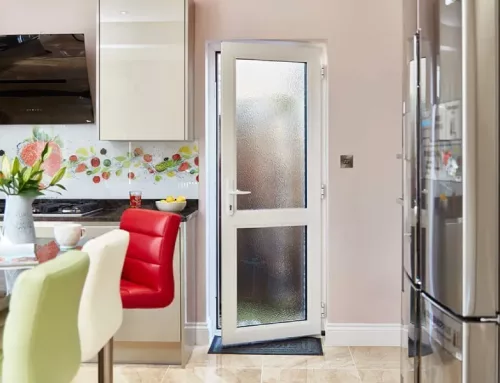When it comes to selecting windows for your home or office, understanding the differences between various materials is essential. Two popular choices in the market today are uPVC (unplasticized polyvinyl chloride) windows and aluminium windows. Each option has its own unique characteristics and advantages. In this article, we will delve into the dissimilarities between uPVC windows and aluminium windows, helping you make an informed decision for your specific needs.
uPVC Windows:
uPVC windows are made from a rigid and durable plastic material known as unplasticized polyvinyl chloride. These windows offer several advantages, including excellent energy efficiency, low maintenance requirements, cost-effectiveness, sound insulation, and customizability. The insulating properties of uPVC windows help to reduce heat loss, making them energy-efficient and potentially lowering your energy bills. Additionally, they are resistant to rot, corrosion, and pests, requiring minimal upkeep. Furthermore, uPVC windows come in various styles and sizes, allowing for customization to suit your preferences.
However, uPVC windows do have some limitations. They offer a more limited range of color options compared to aluminium windows. Additionally, while uPVC is a durable material, it is not as structurally strong as aluminium, which may limit the window’s size or design options. Moreover, prolonged exposure to UV radiation can cause uPVC windows to fade over time.
Aluminium Windows:
Aluminium windows are constructed using lightweight and strong aluminium frames. These windows offer their own set of advantages, including exceptional strength and durability, a sleek and modern appearance, design versatility, wide color options, and recyclability. The strength of aluminium allows for larger window sizes and more intricate designs. Additionally, aluminium windows are available in a wide range of colors, providing ample choices to match your aesthetic preferences. Furthermore, aluminium is highly recyclable, making it an eco-friendly choice.
However, there are a few drawbacks to consider with aluminium windows. They tend to be more expensive compared to uPVC windows, which can impact your budget. Aluminium is also a good conductor of heat and cold, which can affect the overall energy efficiency of the windows. Furthermore, aluminium is susceptible to corrosion over time, especially in coastal areas or regions with high humidity.
Key Differences between uPVC and Aluminium Windows:
- Material Composition: uPVC windows are made from rigid plastic, while aluminium windows utilize lightweight aluminium frames.
- Energy Efficiency: uPVC windows provide excellent insulation, while aluminium windows may conduct heat and cold more readily.
- Maintenance Requirements: uPVC windows require minimal upkeep, whereas aluminium windows may need occasional maintenance to prevent corrosion.
- Customization Options: uPVC windows offer limited color choices, while aluminium windows provide a wider range of colors and design flexibility.
- Structural Strength and Durability: Aluminium windows are stronger and can accommodate larger sizes and complex designs compared to uPVC windows.
- Thermal Conductivity: uPVC windows offer better thermal insulation, reducing energy loss, whereas aluminium windows may have slightly lower energy efficiency.
- Aesthetics and Design Flexibility: Aluminium windows have a sleek and modern appearance, while uPVC windows can be customized to match various architectural styles.
- Cost Considerations: uPVC windows are generally more cost-effective, while aluminium windows may have a higher initial investment.
Factors to Consider When Choosing:
When deciding between uPVC and aluminium windows, several factors should be taken into account. Consider the climate and environmental factors in your area, your budget constraints, desired aesthetics and design preferences, energy efficiency requirements, and long-term maintenance considerations. Consulting with professionals in the industry can provide personalized advice based on your specific needs.



